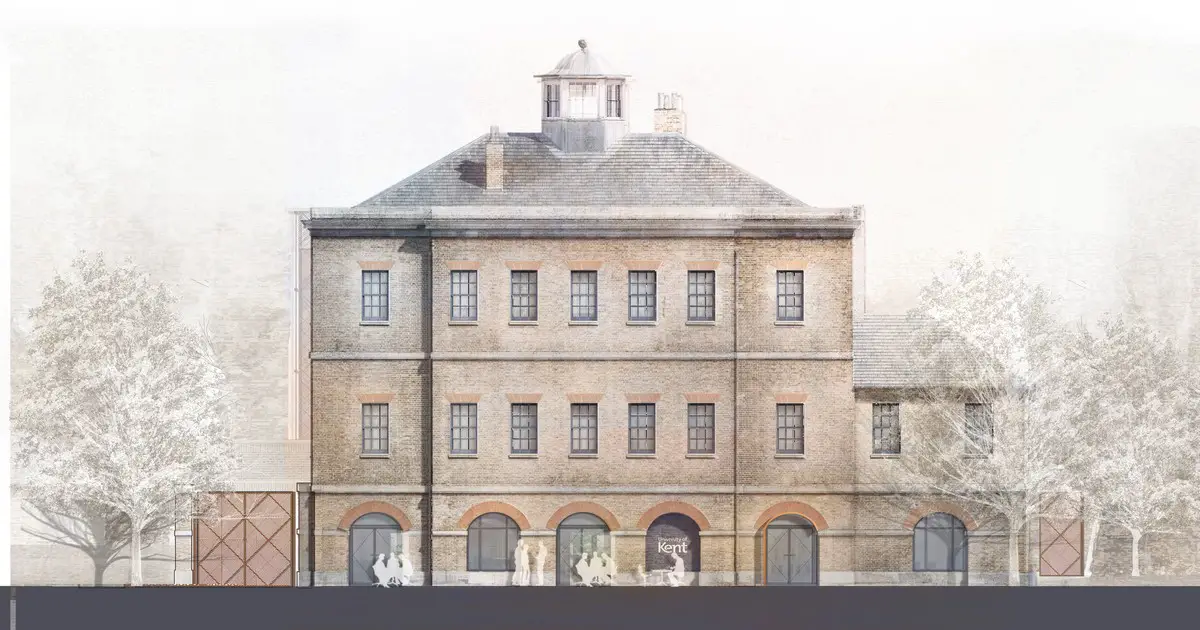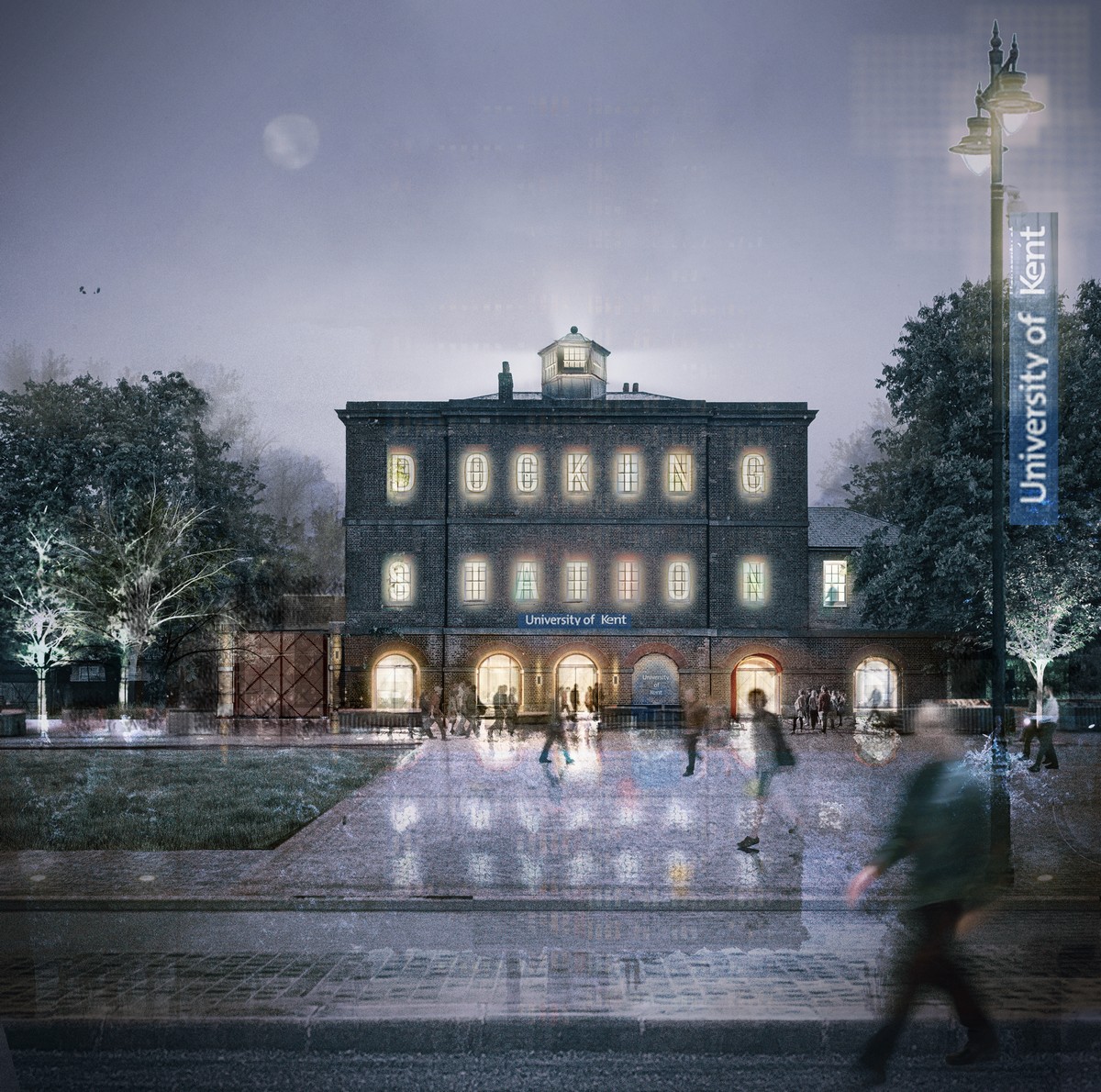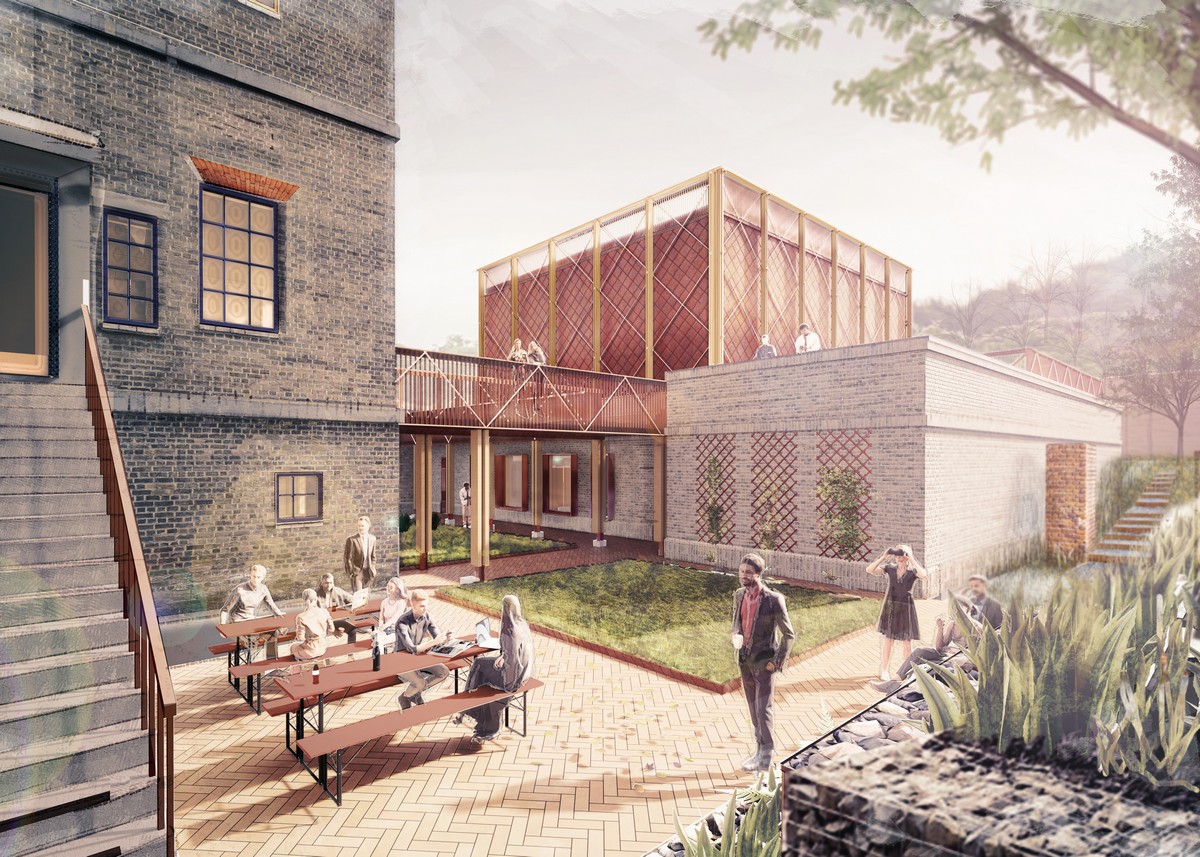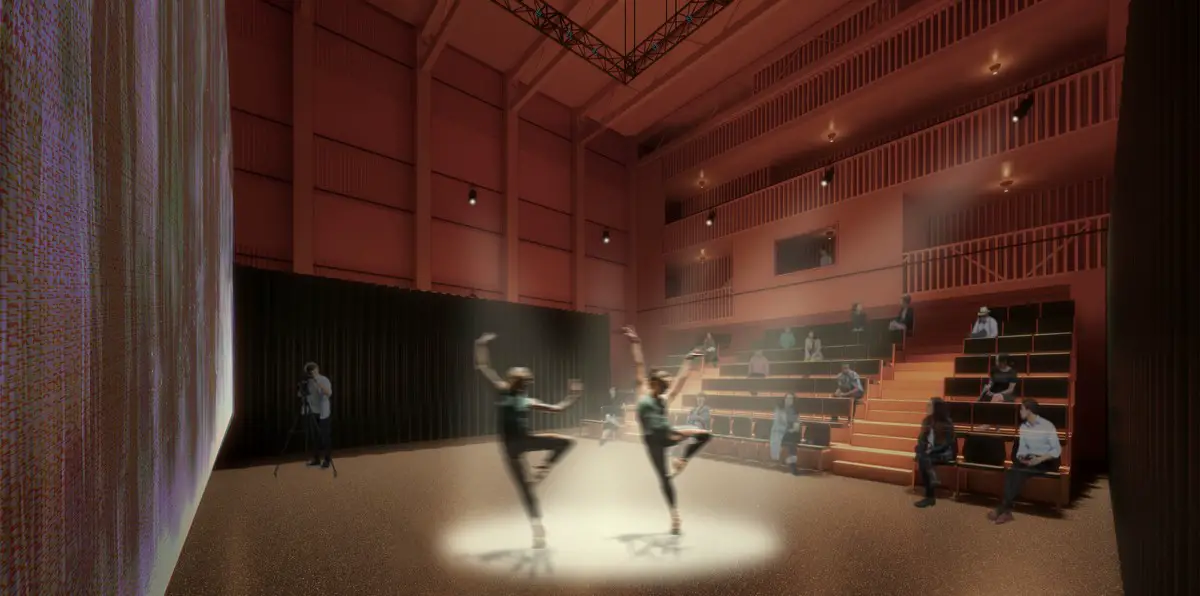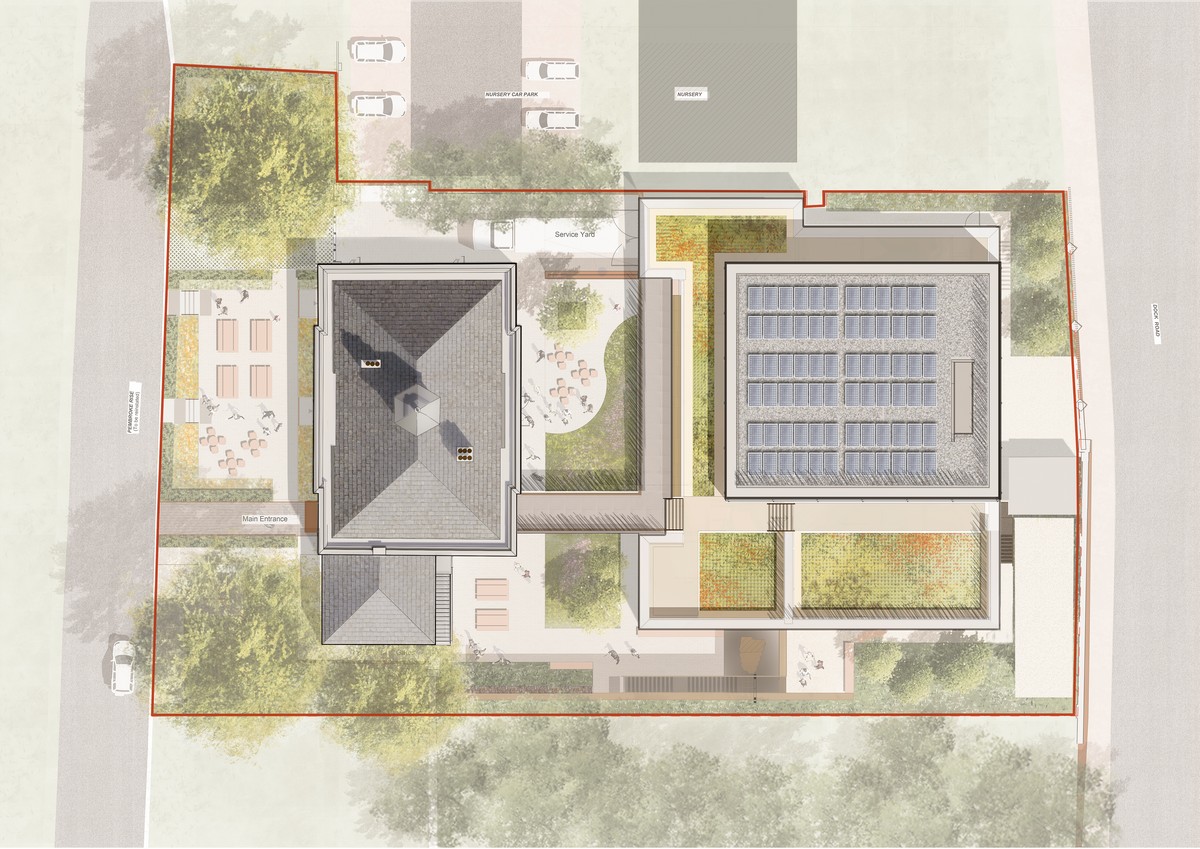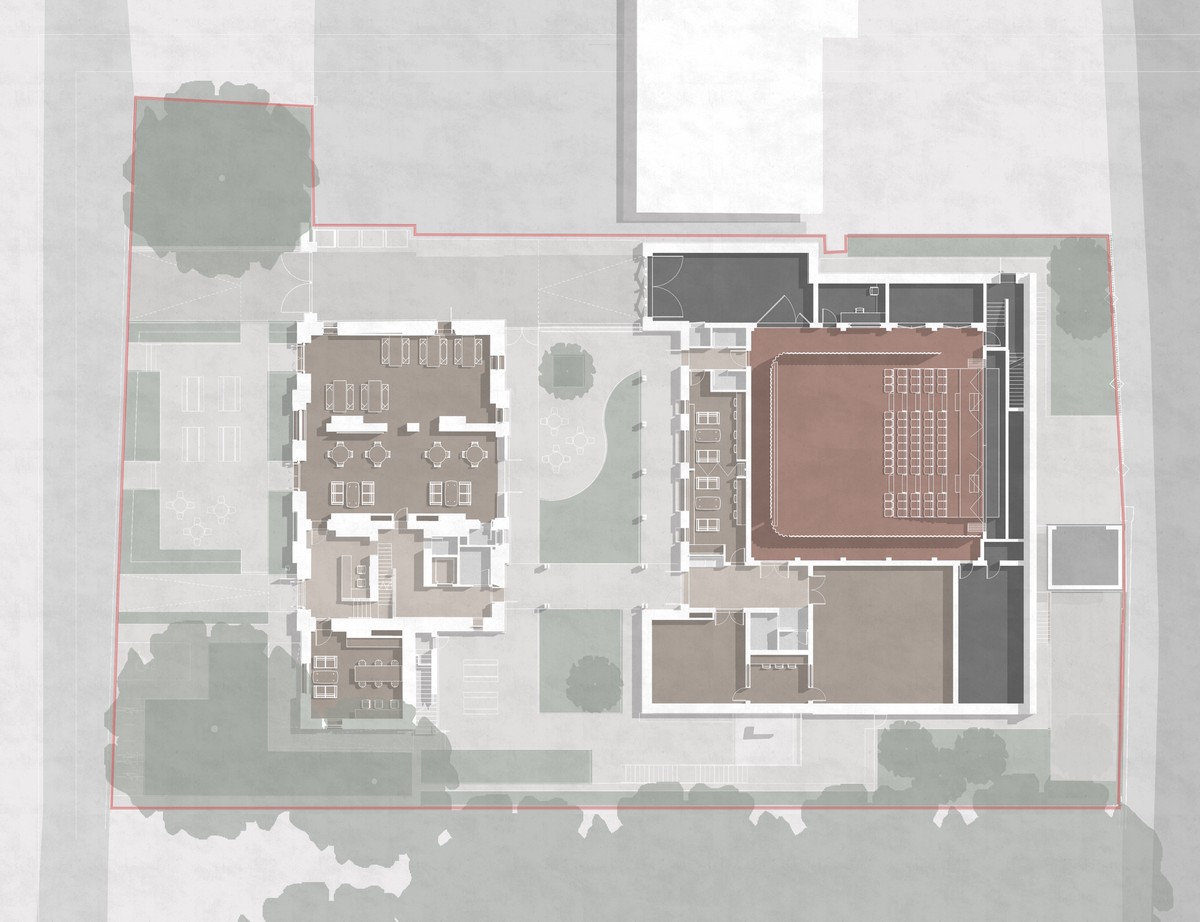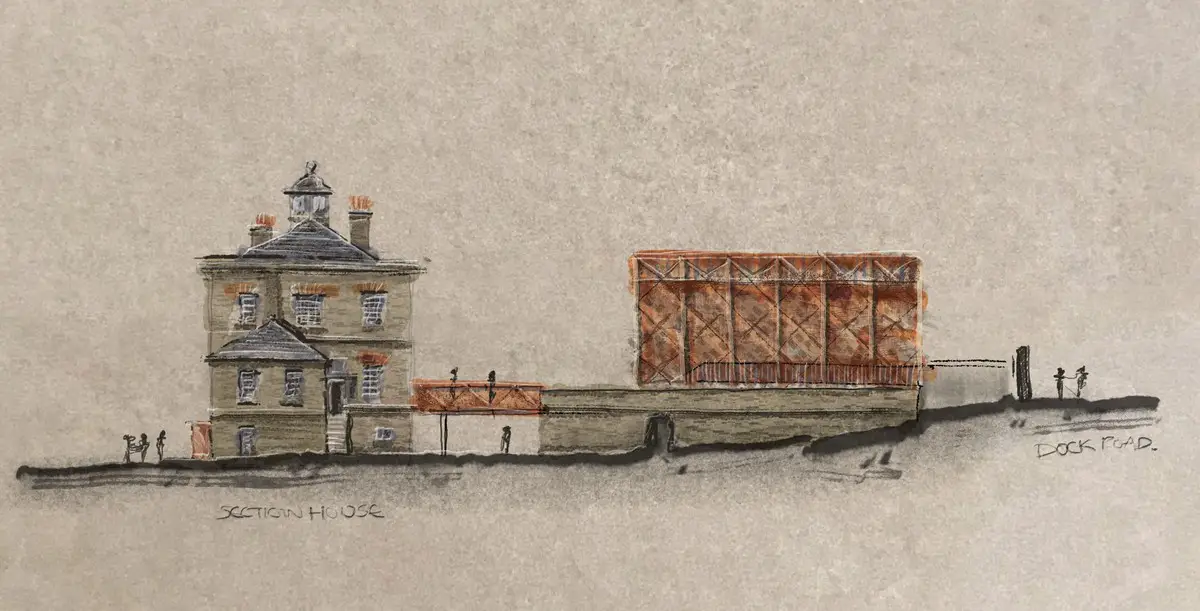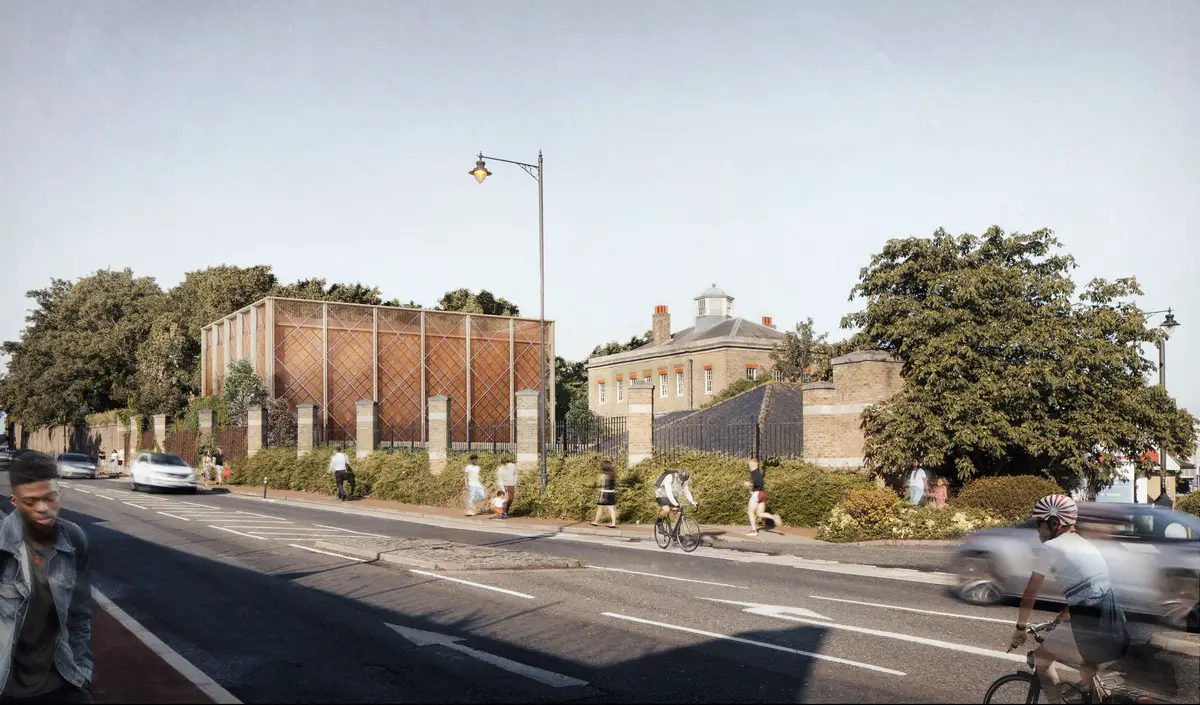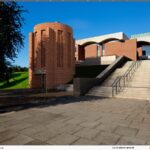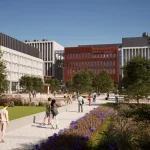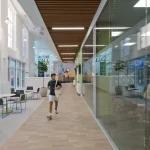Docking Station at the University of Kent, South East England, English campus architecture, planning permission
Docking Station at the University of Kent, England
24 January 2024
Architects: Feilden Clegg Bradley Studios
Location: Medway, Kent, southeast England, United Kingdom
Images by Feilden Clegg Bradley Studios
Docking Station at the University of Kent
Plans have been approved by Medway Council for Docking Station, a new hub for the cultural and creative industries for the University of Kent in partnership with Medway Council and Chatham Historic Dockyard Trust, with a focus on immersive digital technology, innovation and research.
Located in Medway’s Historic Dockyard Chatham, between the University’s Pembroke campus and its Historic Dockyard premises, this development will place creative and cultural industries at the heart of the regeneration plans.
Docking Station will be a flagship building designed to inspire future development in the surrounding area and region. The proposed high quality creative centre will bring together state-of-the-art commercial digital production studios, support for local businesses, new education and training opportunities as well as a public programme of events and activities.
By converting the Victorian Grade II listed Scheduled Monument, the former Police Section House and building a new facility within its grounds, Docking Station will provide state-of-the-art production studios for the creative technology sector including virtual production and motion capture, volumetric capture and photogrammetry facilities. The project will also provide performance space, start-up/accelerator facilities, workshops, flexible teaching areas, gallery and exhibition space, as well as a café and social spaces for the community. The building will form the centrepiece of the proposed redevelopment of the surrounding Interface Land, once part of the Royal Dockyard Chatham, and invite the public into the building for the first time in its history.
The former Section House has had a number of uses throughout its life but has been derelict since the 1980s. It will be refurbished and retrofitted, and house the public facing spaces – the exhibition spaces, hireable meeting spaces, and associated ancillary spaces on the Ground Floor; with post-production studios, office, co-working and communal space on the upper floors. A deep retrofit of the existing building fabric will significantly enhance its thermal performance and use sustainable materials, low energy heating, lighting and ventilation systems and on-site electricity generation to ensure a low carbon footprint and preserve the historic building for future generations.
Meanwhile, the proposed new Digital Production Studios building includes approximately 735 sqm (GIA) of floor space that will be made up of three studios and associated green rooms/dressing rooms. The new building will be of CLT and Glu-lam frame construction, reducing the building’s carbon footprint and continuing the dockyard’s legacy of timber engineering which was pioneered in Chatham’s golden-age of boatbuilding, and, in its iconic timber workshops, warehouses and covered slipways.
The character of the new Digital Studio building is also inspired by the materials and technologies which have defined the Dockyard historically. This includes a brickwork ground floor ‘plinth’ which references the dry docks and engineered walls of Brunel’s adjacent Sawmills. Also, the Main Studio’s cladding of patterned, cross-braced Corten steel, is inspired by the dockyard’s metal boat-building era, and the mast and rigging which was manufactured at the dockyards. The patina of the weathered metal cladding will create a warmth and timeless quality, which will harmonise with the varied tone and aged brickwork of the Section House.
While two separate buildings, the two facilities will work together as one, with a lush, planted courtyard and elevated walkway linking the historic Section House and the terraced green roof and landscape of the new studios.
Luke Gilbert, Associate at Feilden Clegg Bradley Studios said: “Docking Station at The Historic Dockyard Chatham has the potential to make an enormous catalytic contribution to the cultural regeneration of the area and help position Medway at the centre of the burgeoning digital arts sector. It will offer dynamic spaces and cutting-edge facilities to provide a hub for collaboration between students, start-ups and industry.
Our refurbishment of the former Police Section House will restore the local landmark and open-up the building to the public for the first time, providing amenities for the community and an opportunity to experience immersive performances and world-leading motion capture technology, first-hand. To unite the two buildings and embed the studios within their historic setting, we have proposed a biodiverse terraced roofscape and courtyard with an architectural language which references the dockyard’s industrial heritage.
By using Cross Laminated Timber (CLT) and recycled materials we are minimising the new building’s environmental footprint, and the use of on-site energy generation and highly efficient building envelopes will help to secure a resilient and sustainable future for the Scheduled Monument and Docking Station as a whole.”
The project is committed to delivering a social and environmentally responsible building that will encourage, stimulate and support creativity across the Medway region. It aspires to be an exemplar of low carbon design approaches, encourage on-site power generation, maximising opportunities for green infrastructure and biodiversity gain, and minimising waste and encouraging reuse / recycling of materials.
The Docking Station is supported by Arts Council England’s Cultural Development Fund (investment from the Department for Digital, Culture, Media and Sport) and Levelling Up Fund (investment from the Department for Levelling Up Housing and Communities) as well as the National Lottery Heritage Fund and Creative Estuary. Docking Station will deliver a high-quality international creative digital hub for technology, performance, and training, which will contribute significantly to Medway’s commitment to growing the creative industries sector by 2030. It will address the income, productivity and skills levelling-up challenges faced in Medway, make a visible impact on Medway’s cultural regeneration, provide the facilities and skills development opportunities to support digital innovation, create an exciting and attractive offer to prospective students, and, bring world-class digital opportunities to Chatham.
Construction is planned to start in Summer 2024.
Docking Station at the University of Kent, South East England – Property Information
Architects: Feilden Clegg Bradley Studios – https://fcbstudios.com/
Images: Feilden Clegg Bradley Studios
Docking Station, University of Kent, South East England images / information 240124
Location: Kent, Southeast England, UK
Kent Home Designs
Contemporary Kent Property Designs – recent selection on e-architect:
Black House
Architect: AR Design Studio
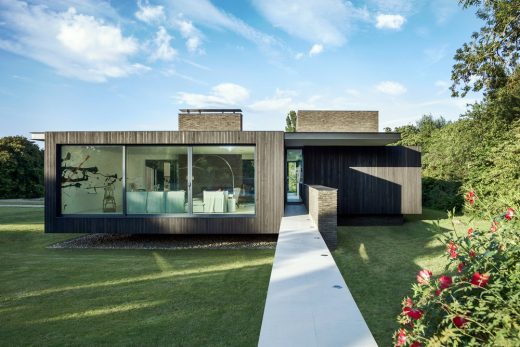
image courtesy of architects
Black House in Kent
Catch Beach House, Seasalter
Architects: Stiff + Trevillion
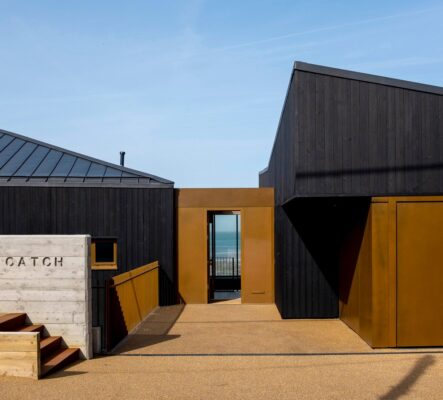
photo : Lukasz Bernacki
Catch Beach House, Seasalter
Appledore Development
Design: RX Architects
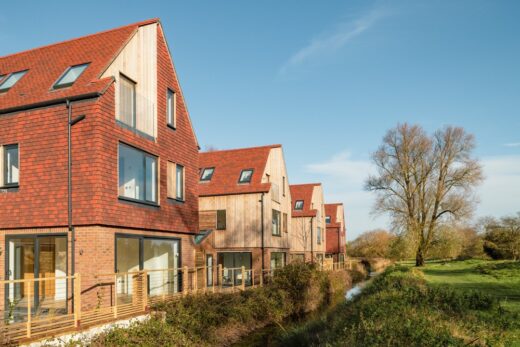
photo : Ashley Gendek
Appledore Development Kent Houses
Court Lodge, Old Romney near Rye, Kent, Southeast England, UK
Design: RX Architects
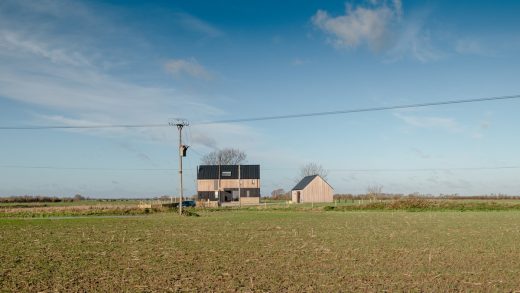
photo courtesy of architects office
New build farm house in Old Romney Marsh
Split House, Sevenoaks
Architect: London Atelier
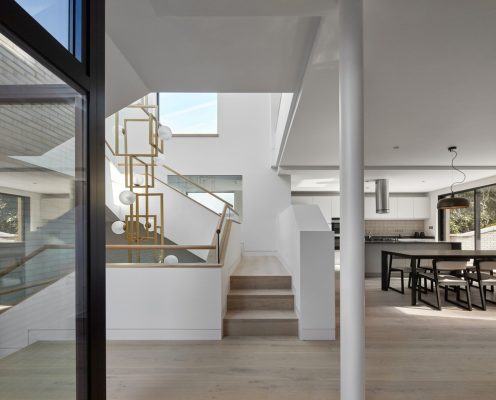
photography : Alan Williams
New House in Sevenoaks
Caring Wood, Leeds, Maidstone – RIBA House of the Year 2017
Design: Macdonald Wright Architects
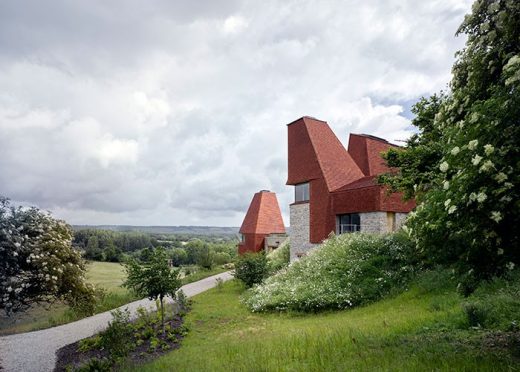
photo © James Morris
Caring Wood in Leeds
Kent Building Designs
Kent Architecture Desings
Three Waves, Dover
Architects: Tonkin Liu
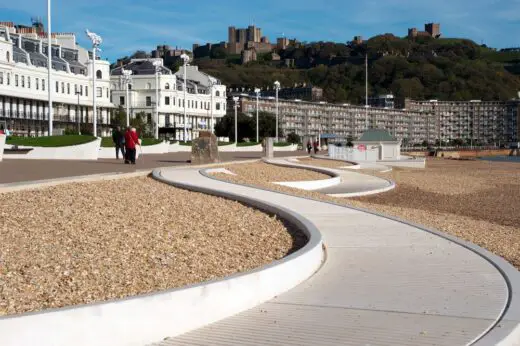
photo : Mike Tonkin
Three Waves Dover Esplanade
The Mitchell Building at Skinners’ School
Design: Bell Phillips Architects
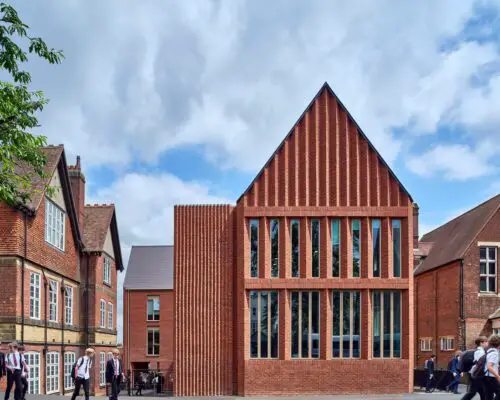
photo : Kilian O’ Sullivan
The Mitchell Building at Skinners’ School
English Architecture Designs – chronological list
Comments / photos for the Docking Station, University of Kent, South East England designed by Feilden Clegg Bradley Studios page welcome

